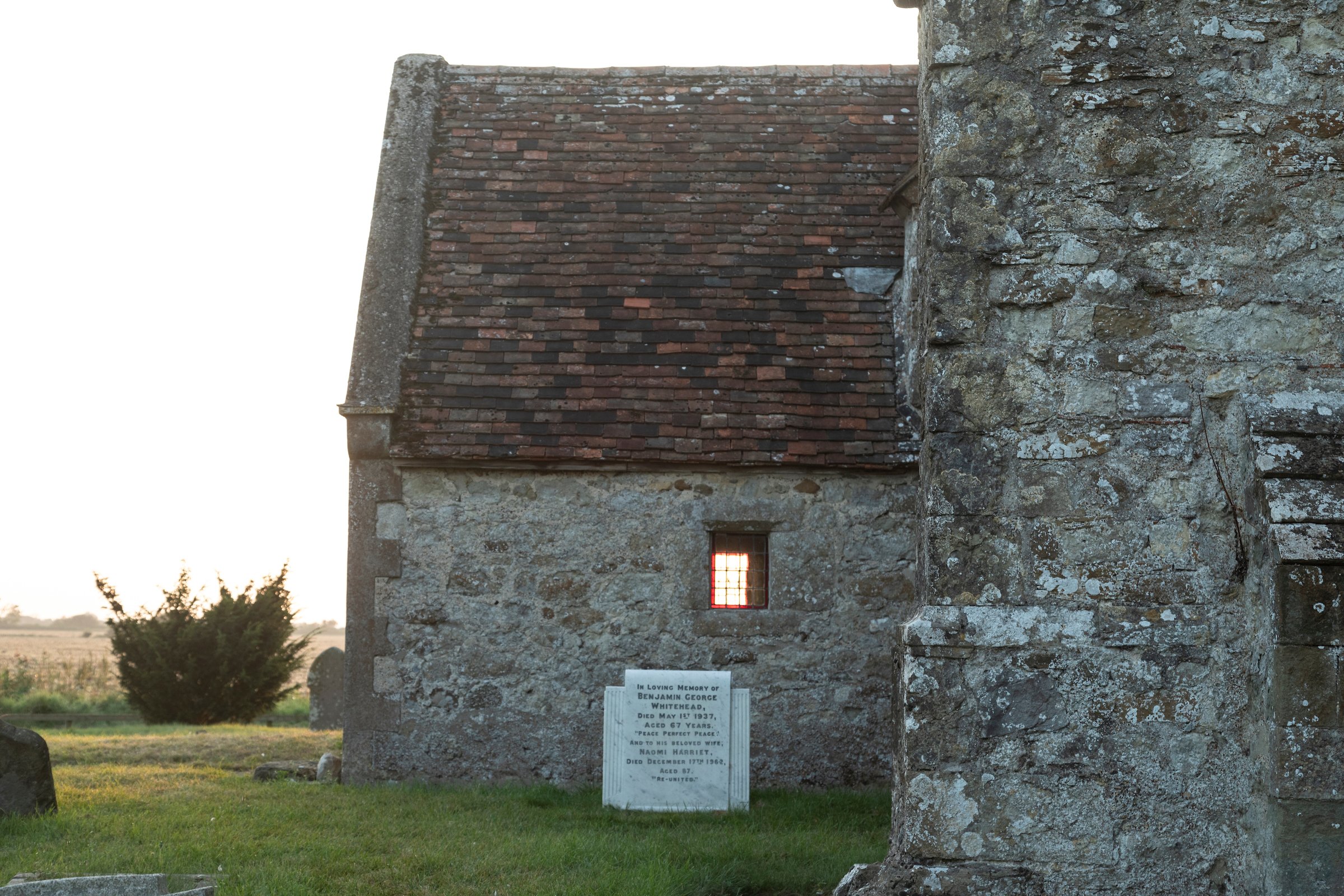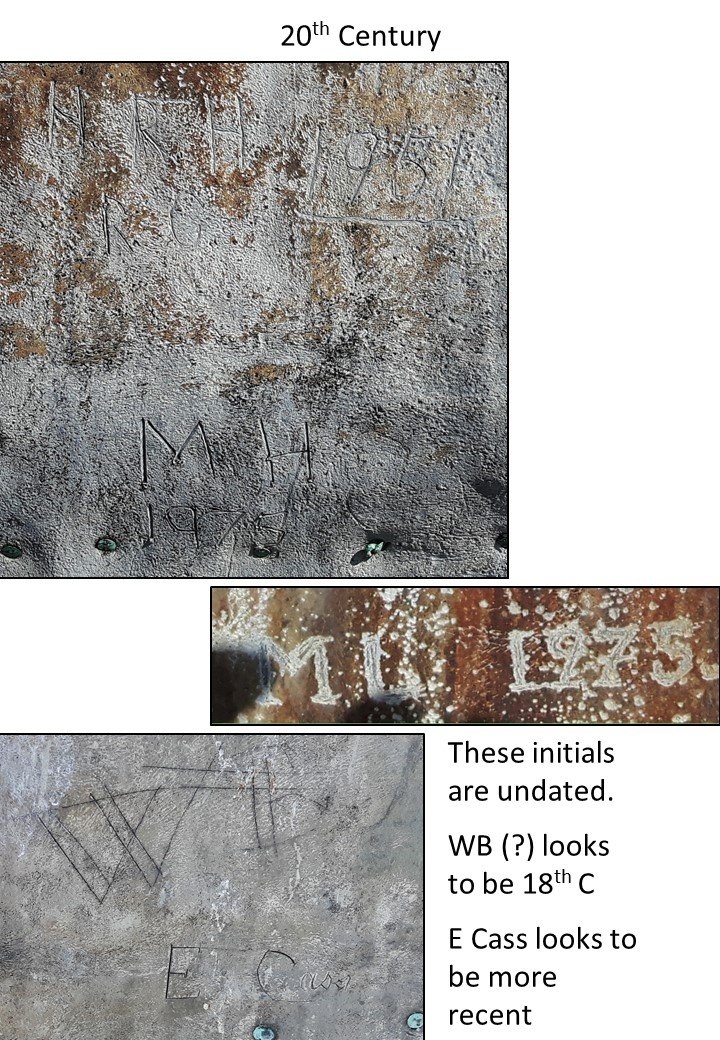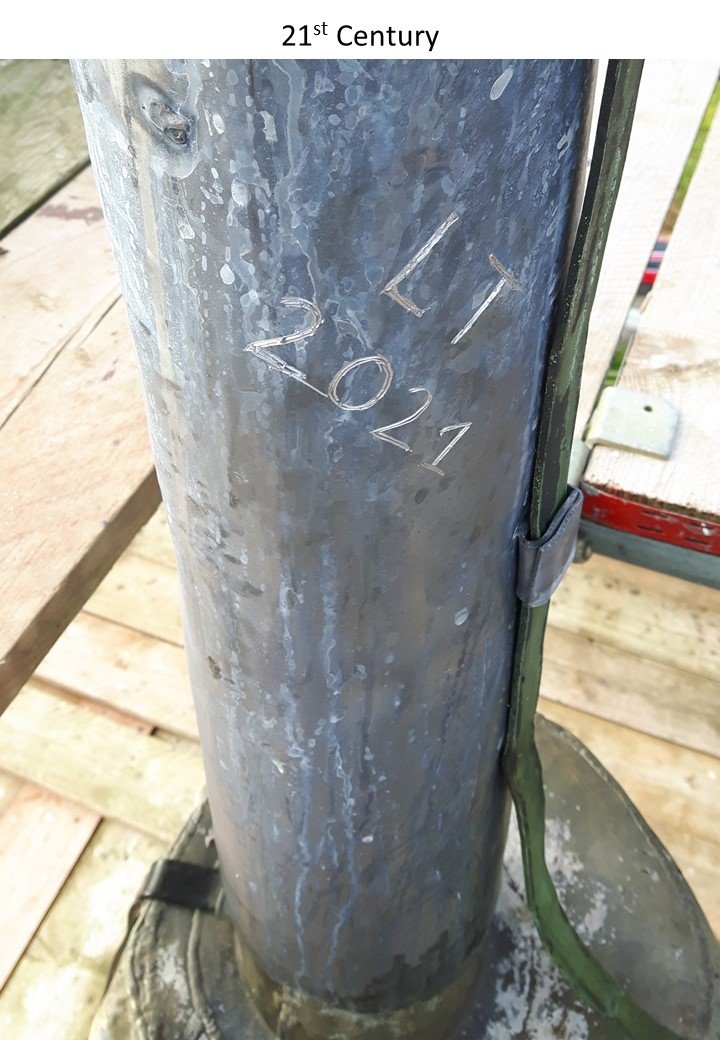
Project Case Studies
REPAIRS TO THE MEDIEVAL CHURCH AT ST. MARY IN THE MARSH
The Trust helped fund a series of fabric repairs to the church of St Mary The Virgin, at St Mary in the Marsh. The Trust contributed £20,920 for work to irradicate Death Watch Beetle, repair timbers, resolve water penetration and to re-gild the beautiful weather vane, with a further grant of nearly £19,000 paid to help resolve further issues identified during the works. In follow-on work, pews were also repaired with a grant of £10,150.
The text and many photos on this page are based on an a public exhibition about the works which was coordinated by the PCC and previously displayed in the church.
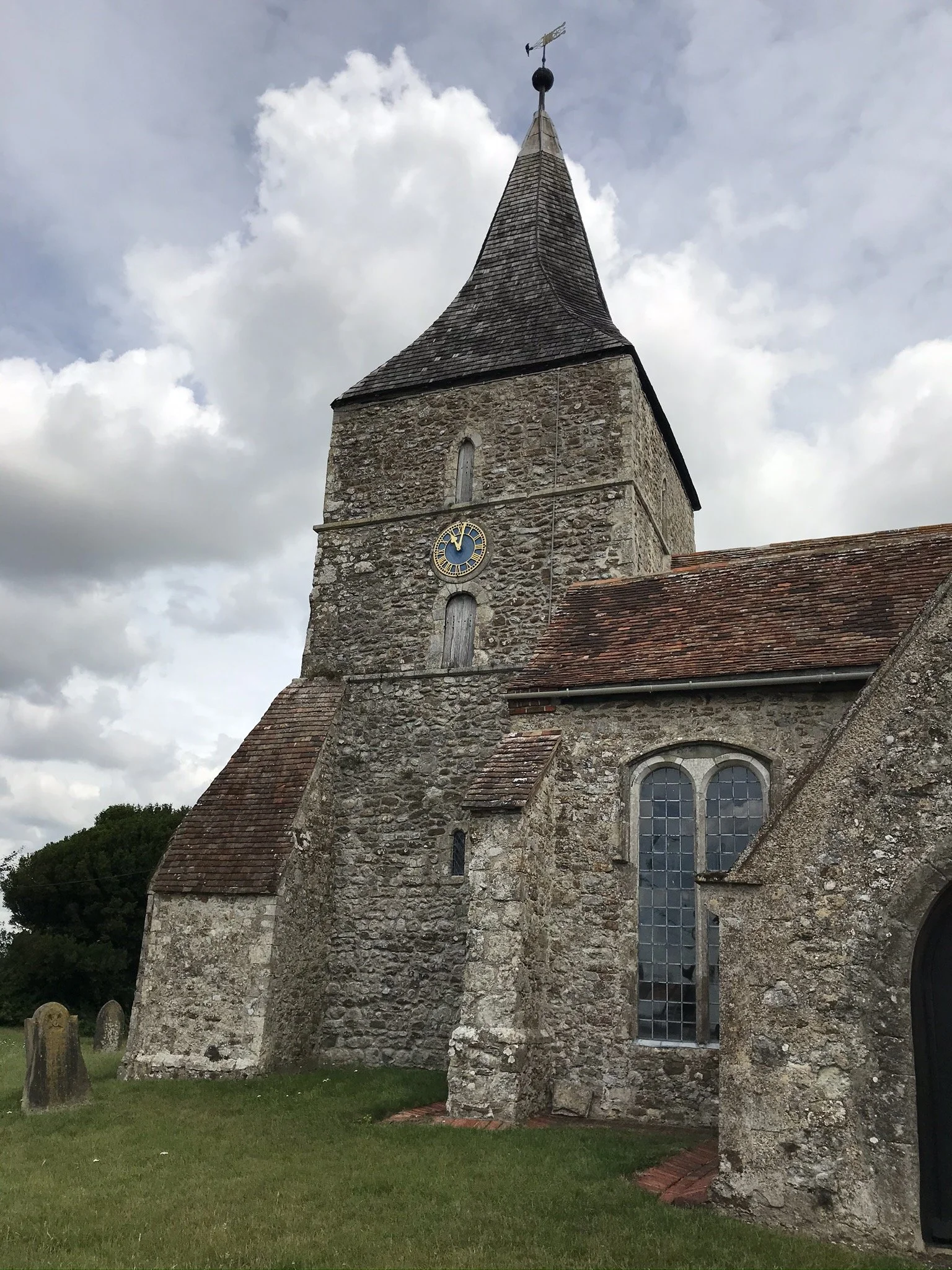
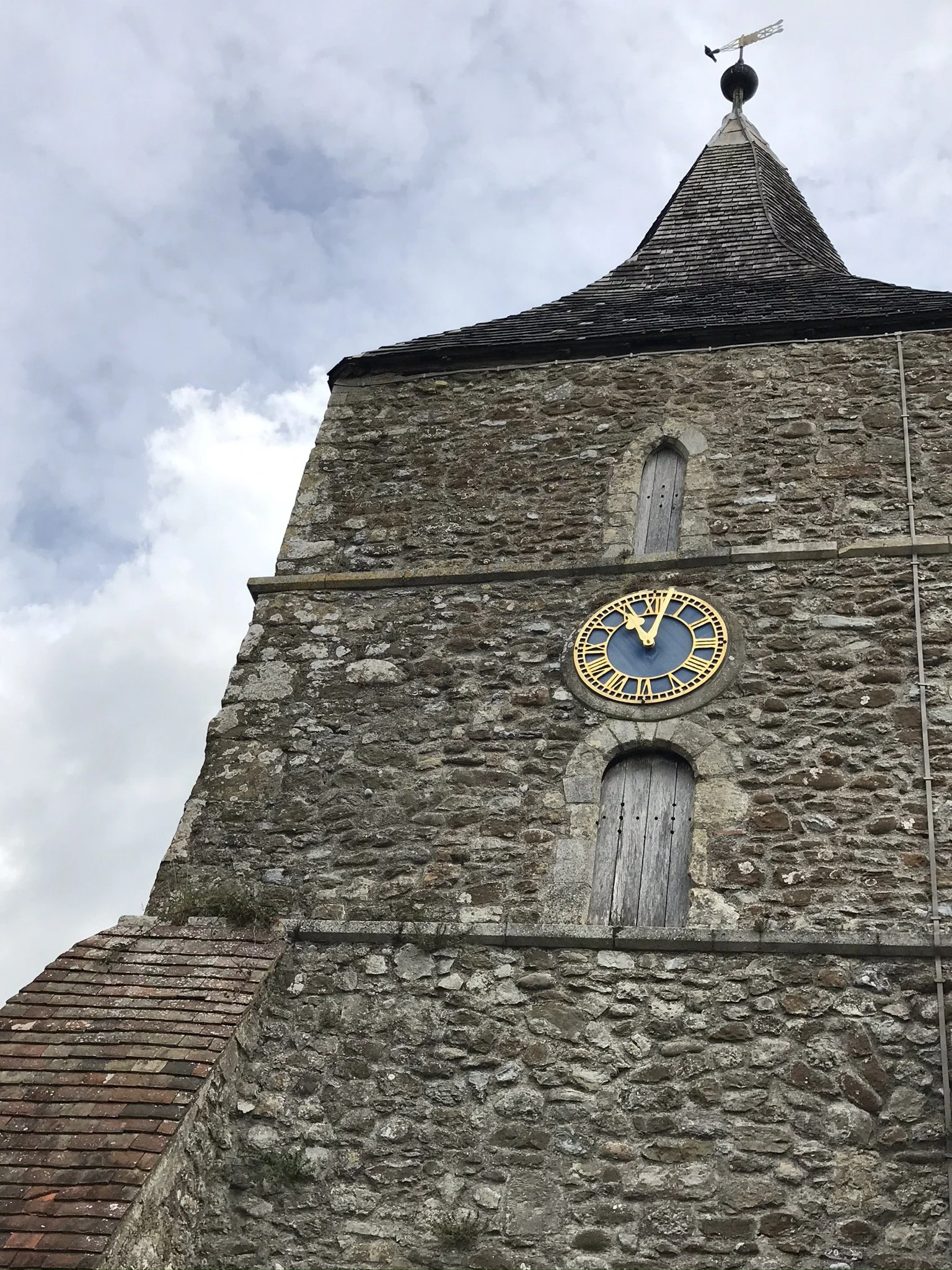

Irradicating Death Watch Beetle and repairing decayed timbers
During the Spring and Summer of 2019, deposits of Frass (bore dust) were found at a number of locations within the medieval church. The dust indicated that Death Watch Beetle (Xestobium Rufovillosum) was active in the timbers. Following consultation with the Church Architect, a specialist firm was brought in to undertake a survey, assess the scale of the problem and advise on suitable treatment.
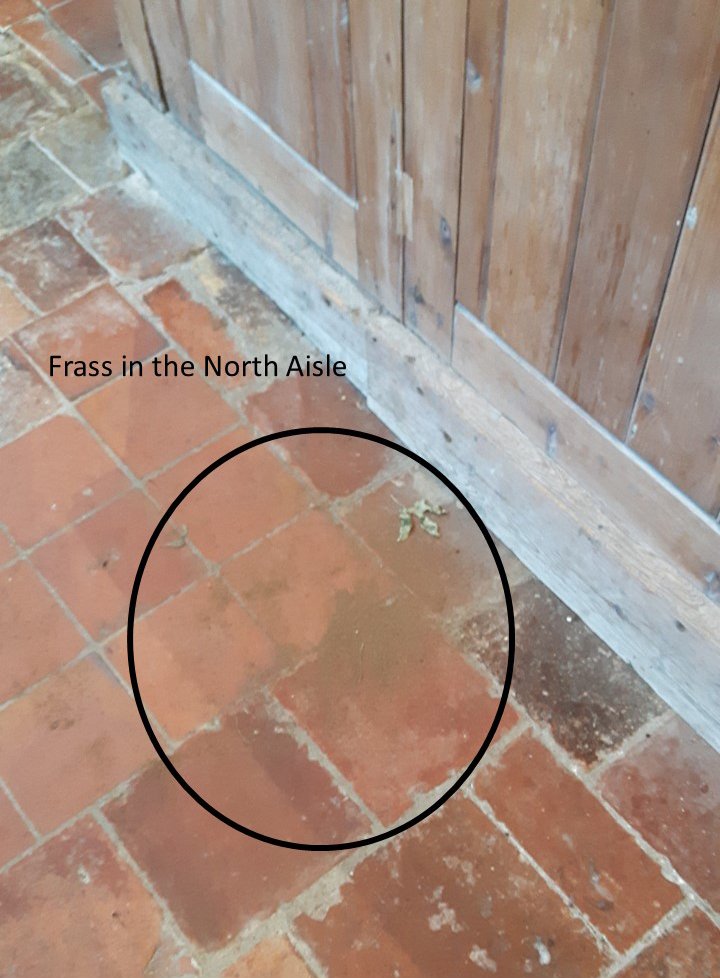

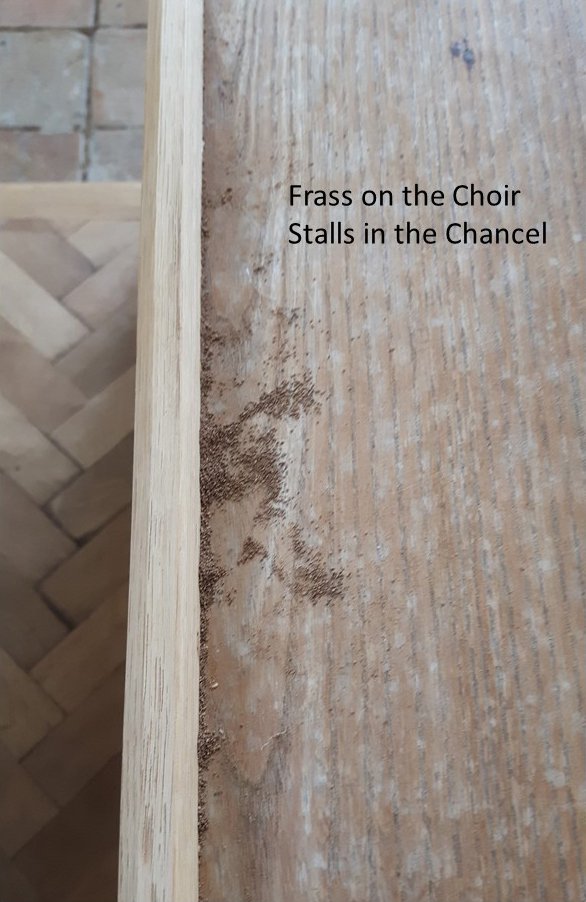
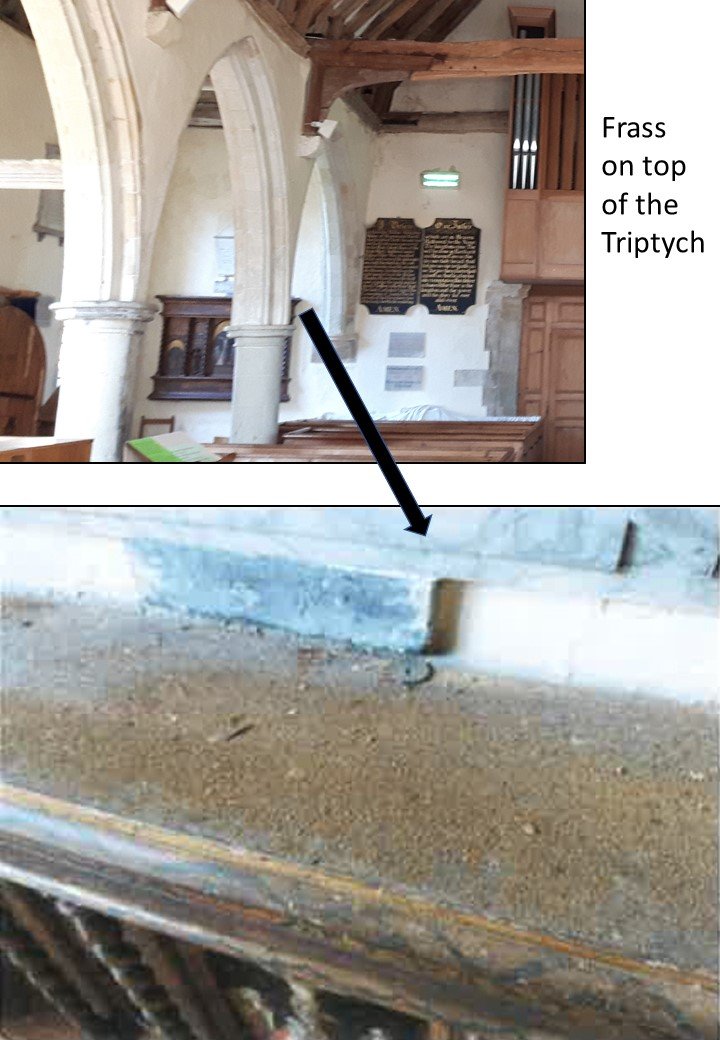
During the course of their inspections, the specialists also discovered decayed timbers which required attention.
The first site was at the junction of the South Aisle and the West Wall. There was evidence of decay where the final rafter of the roof valley meets the timber beam that sits between the outside wall and the wall of the Nave.
The second site was in a section of the wall plate that sits on the dividing wall between the Nave and the North Aisle. This is the line where the sides of the North Aisle and Nave roofs come together to form a valley. During the Church’s history, this valley had leaked and the water had caused timber decay. There was evidence of historic repairs being carried out here. The larvae of Death Watch Beetle thrive in moist timber and significant damage had occurred in this particular section. The wall plate was quite fragile, offering little resistance when tested during the inspection.



Following Faculty approval, steps to implement the treatment and repairs could get underway. Work would require the church to be emptied and scaffolding erected. Those items which could be removed were either stored in the Vestry or off-site. Those which could not be moved were covered. A volunteer work party of church members worked hard to move and cover items. The Church was closed for the whole of September 2021 to allow the preparation, repair work and reinstatement to take place.
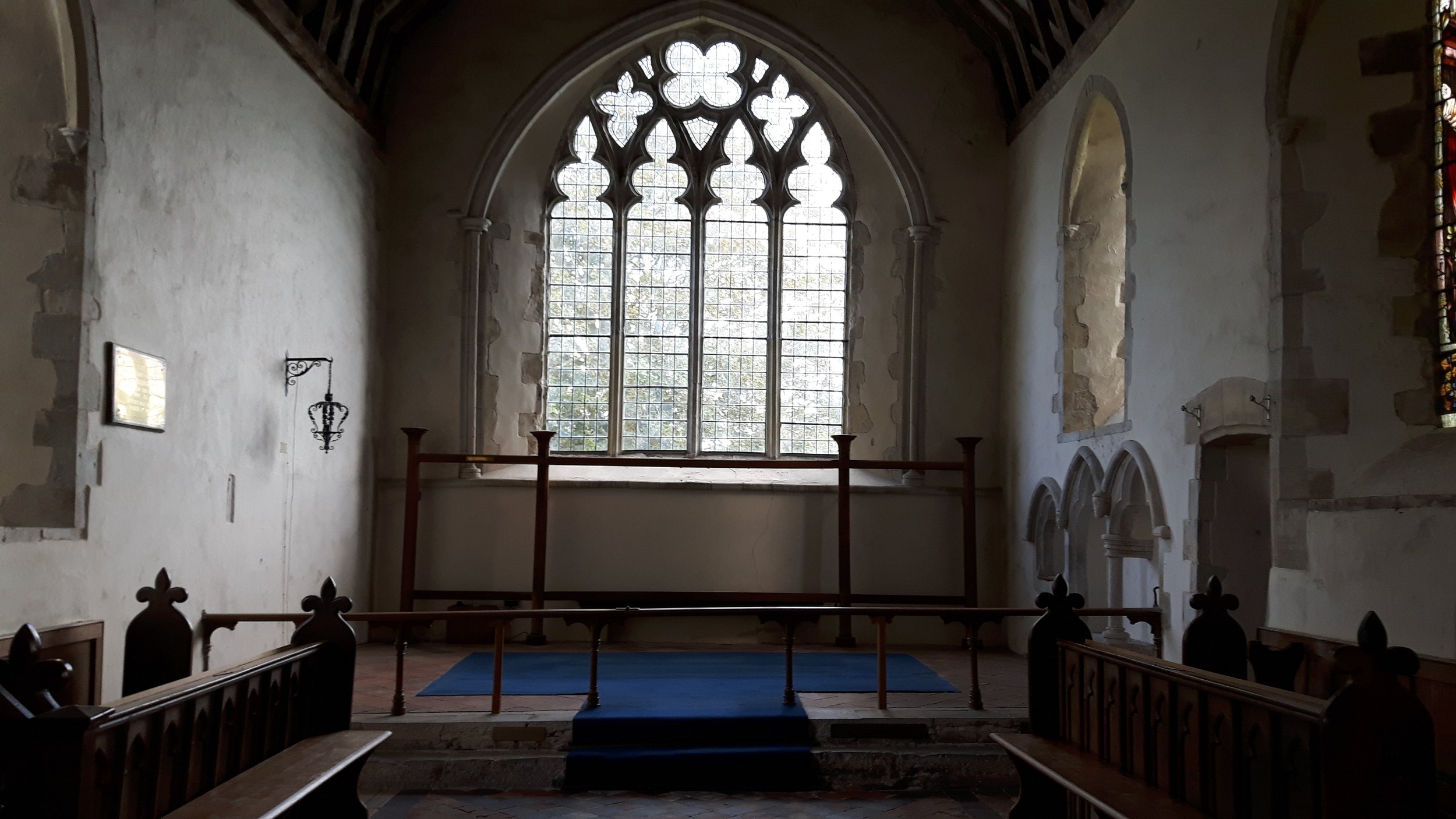
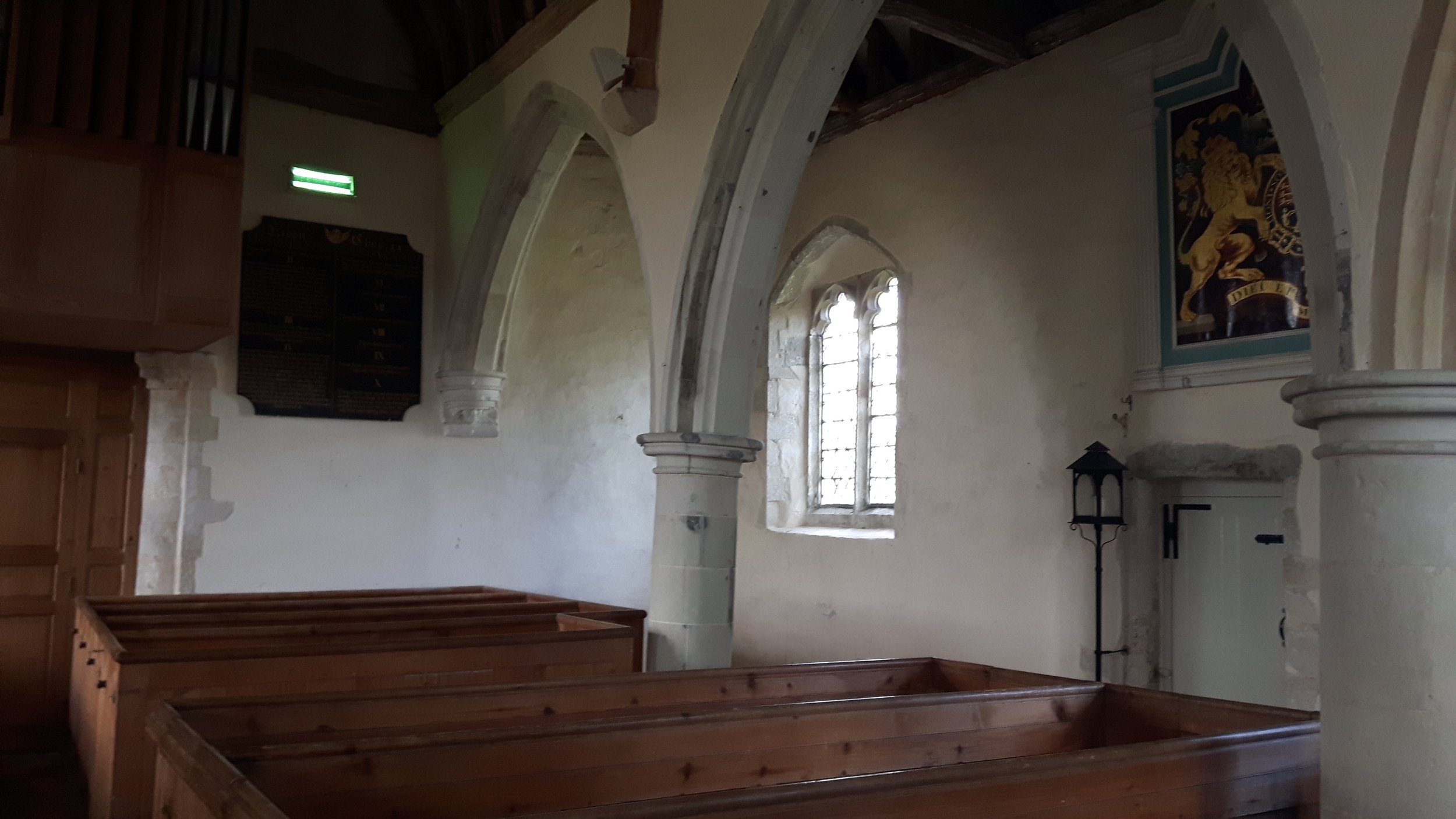

Removal and replacement of the defective timber was rejected as an option because of the scale of disturbance to the surrounding area and roof that would ensue. There was also the risk that further damage would be caused while carrying out such work. The agreed treatment consisted of targeted chemical application, primarily to the wall plates. The chemicals were applied by a mix of surface spraying, brushing, or injection by mastic gun.
The defective timber at the junction of the South Aisle and the West Wall had new oak inserted. A different method was used on the wall plate. The section which was rotten had the interior cut out and infilled with a combination of carbon fibre reinforcing rods and resin.
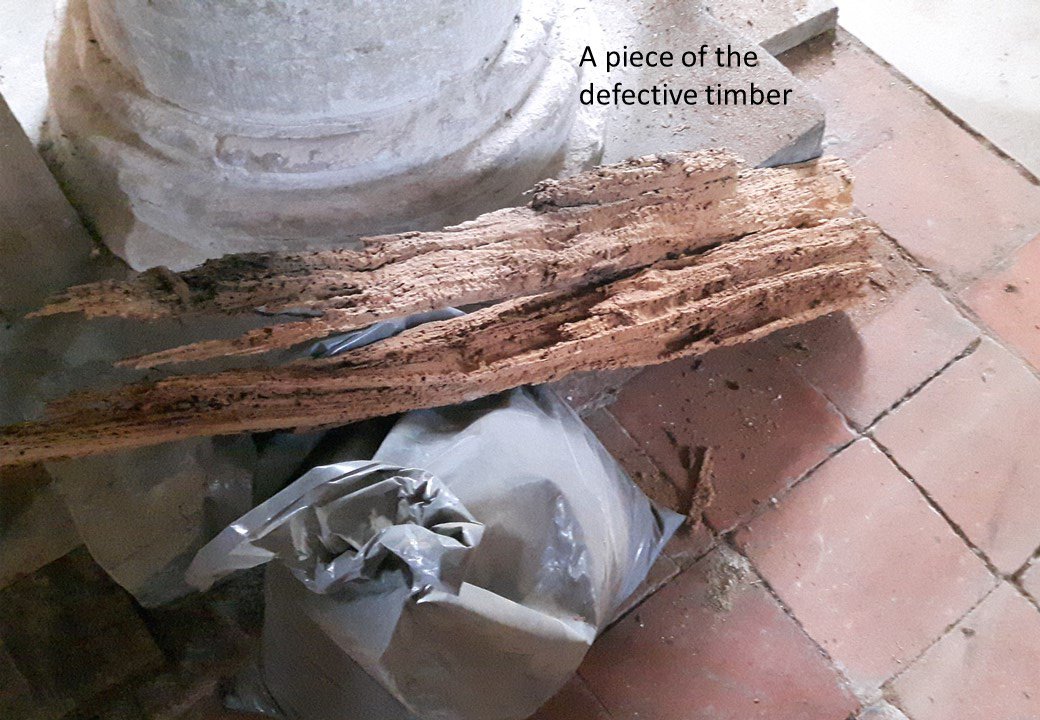

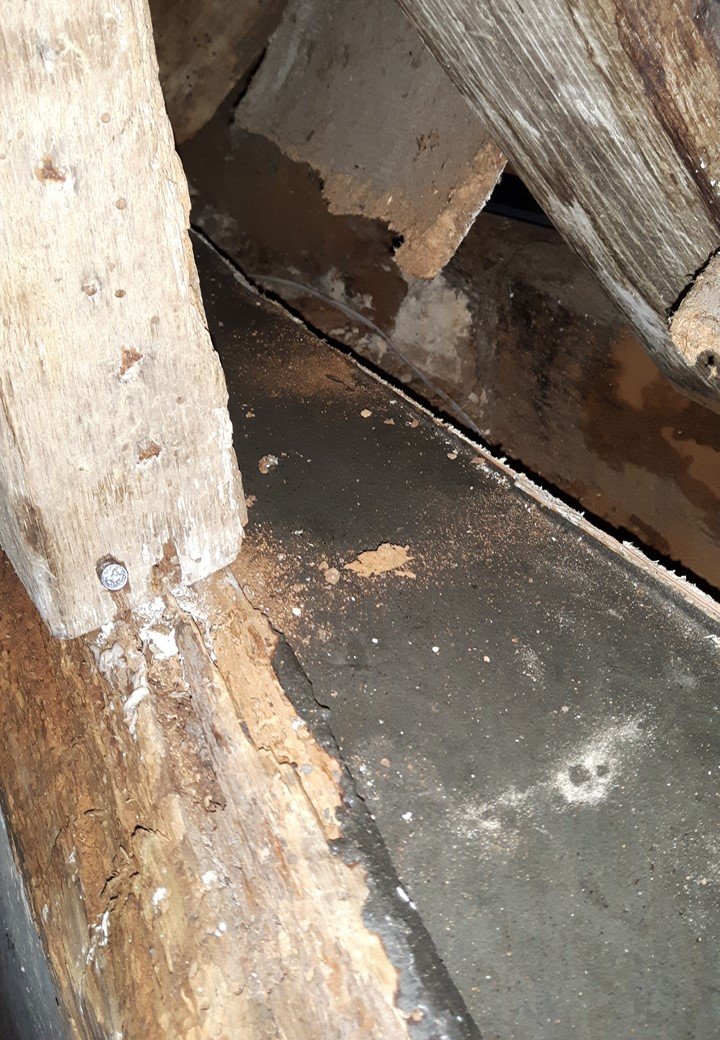
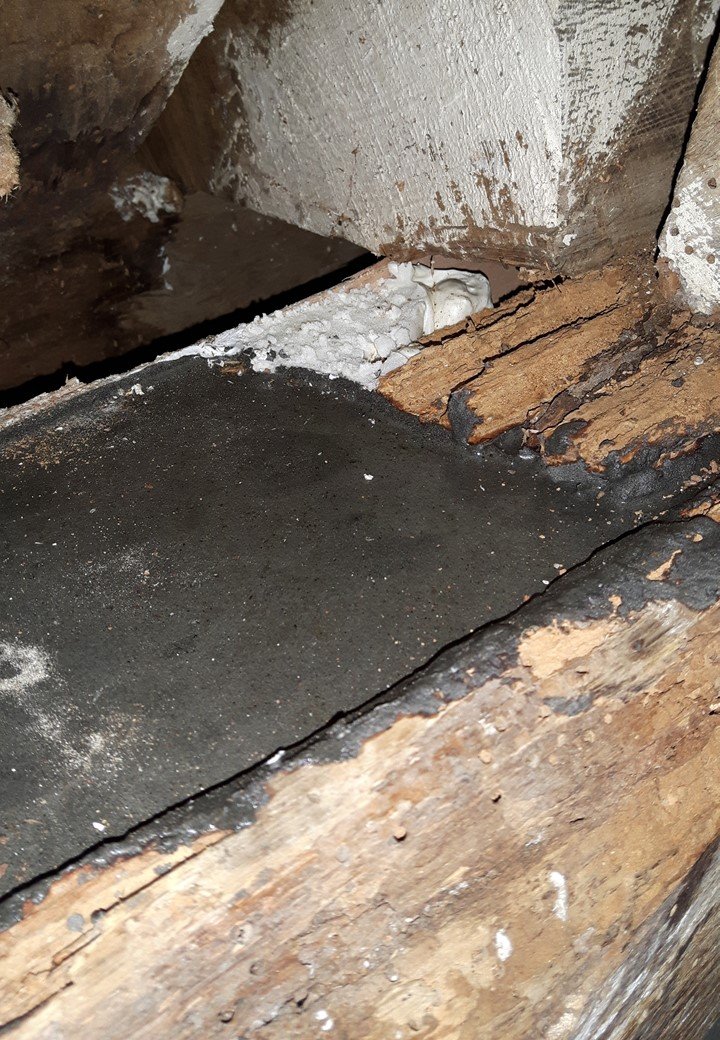
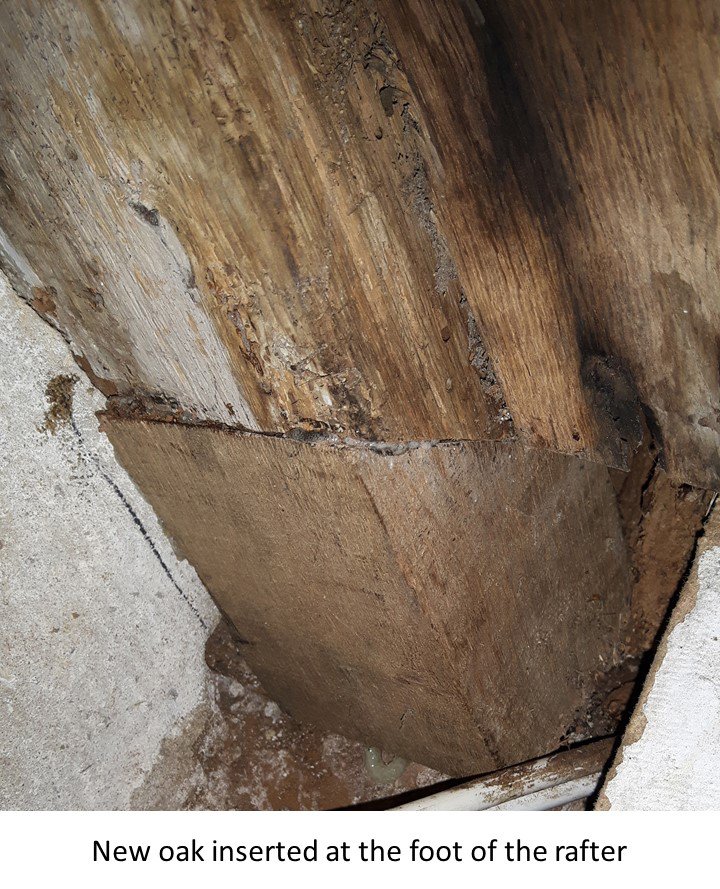
The works required large scaffolding structures to be erected throughout the church. With scaffolding still in place after the repair work, the church working party took the opportunity to clean the roof timbers, walls and lights in the areas which are normally almost impossible to reach.

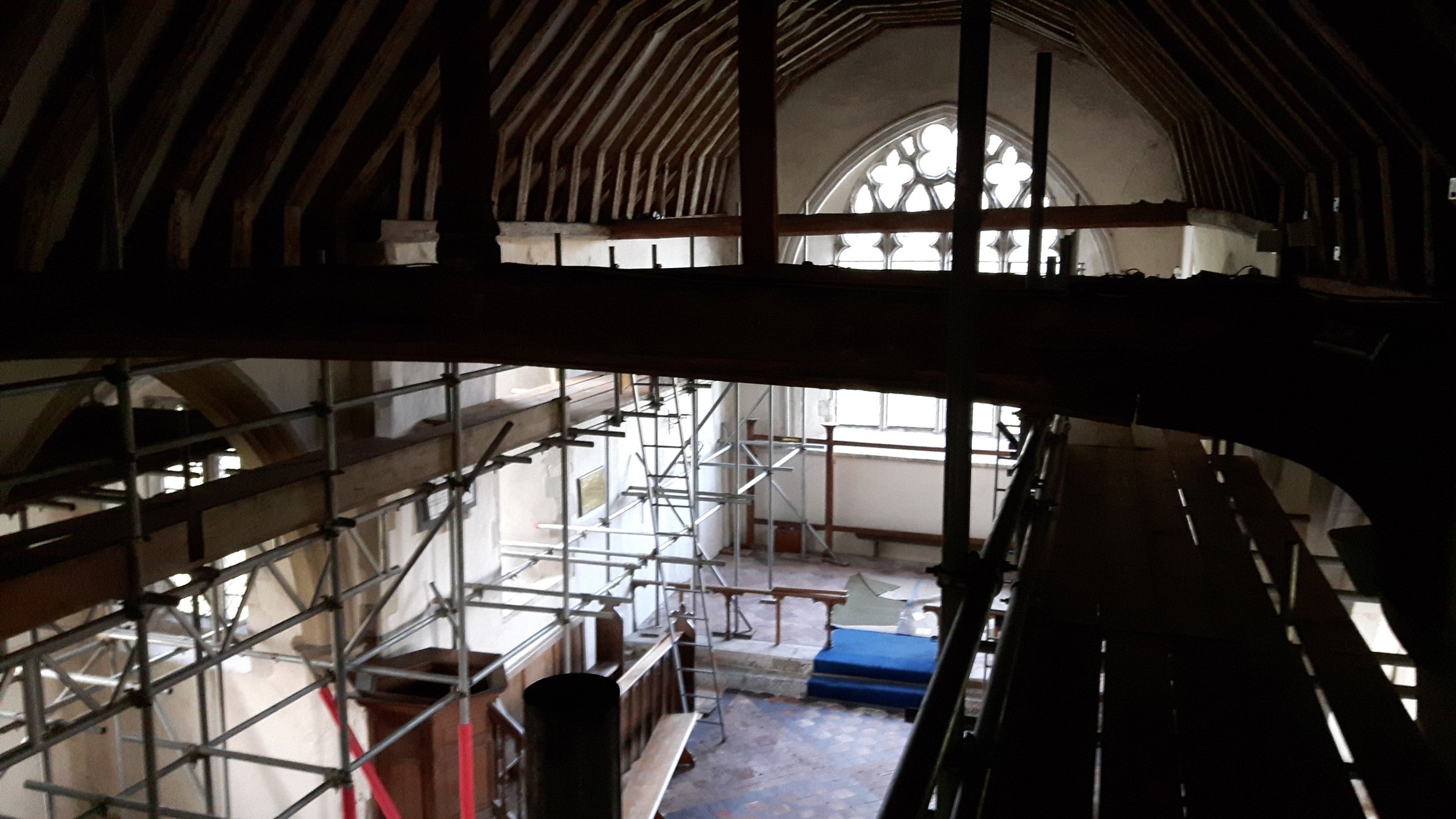



Water penetration in the tower
During an inspection in summer 2021, it became apparent that water was penetrating the interior of the bell chamber. There was concern that this could cause damage to the floors below, including the organ loft. The water appeared to be travelling down the crown post – the central wooden support to the spire. The initial, tentative, conclusion was that the lead cap to the spire had failed in some way.



Inspection of the cap would require scaffolding to be erected around the Tower’s exterior and up to the spire’s summit. As there was an outstanding maintenance task to replace a small number of shingles at the base of the spire, it was decided to make use of the scaffolding to address both matters.
When the scaffolding had been erected and close-up inspection carried out, it became apparent that the wooden shingles on the southerly sides of the spire were in a worse condition than was visible from the ground. This southerly aspect is the one that takes the worst of the weather. Damage by woodpeckers was also found! It was therefore decided to expand the work, to include replacement of the defective shingles. The weather vane was re-gilded at the same time.


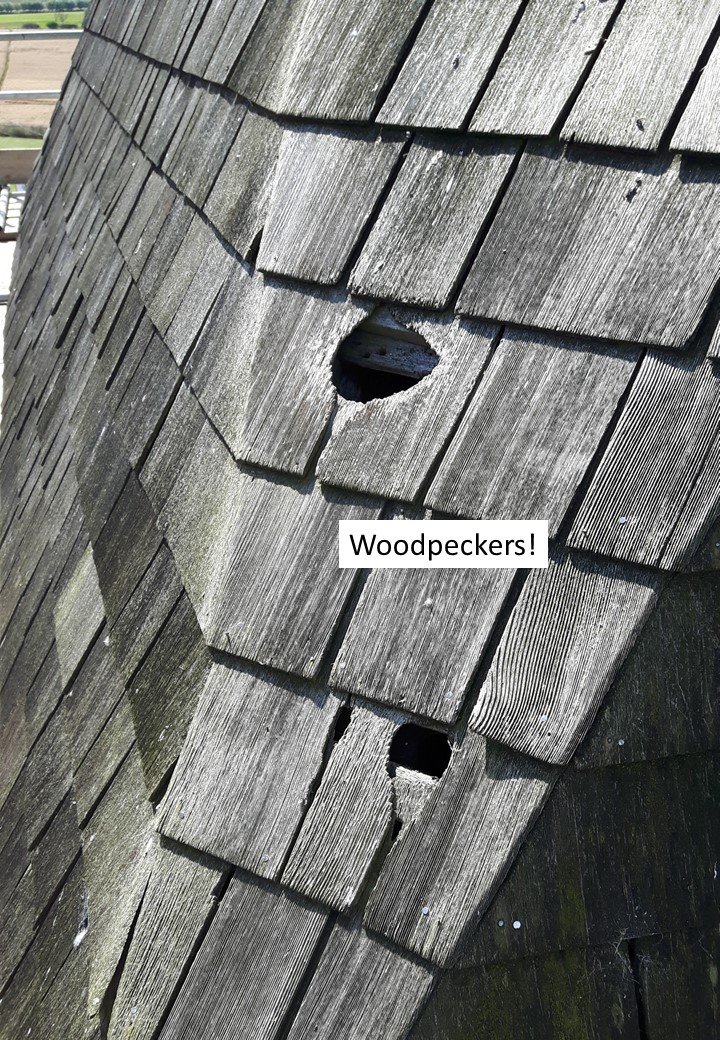

An additional level of scaffolding was required to reach the top of the spire. Once that was in place, the cause of the problem became apparent.
The wooden post that makes up the base of the weather vane’s mounting had developed a split down its length. This was not deep enough to make the mounting unsafe, but it was enough to allow water to run down between the post and the existing lead sheath, and then onto the crown post below.
A new lead collar was made on site which will prevent the problem from recurring.
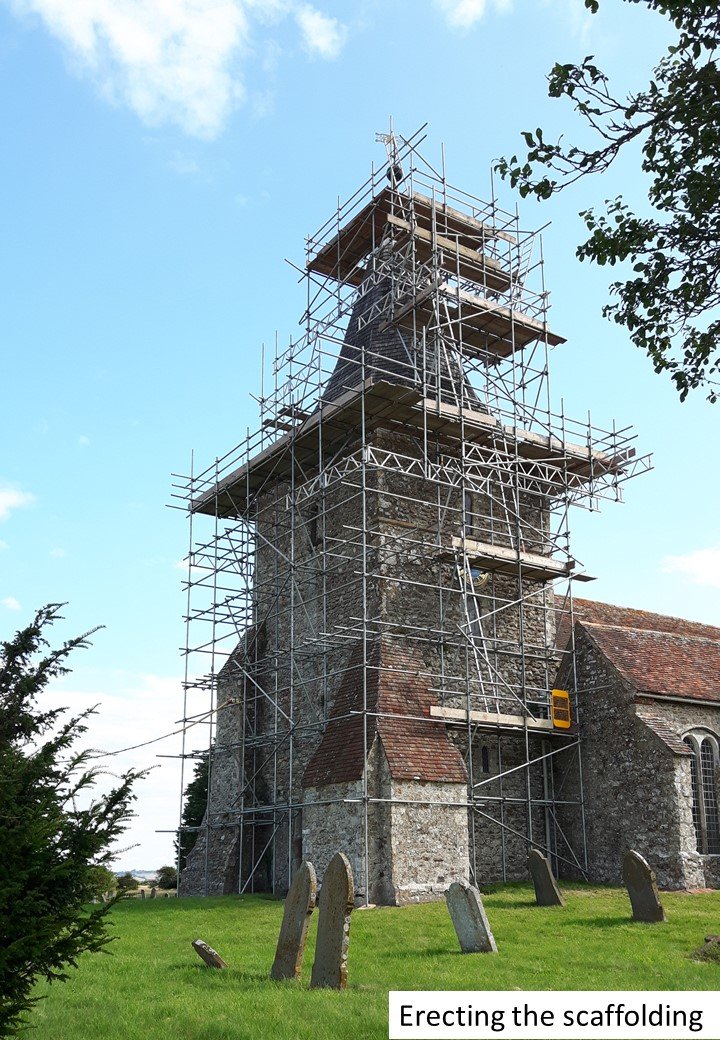
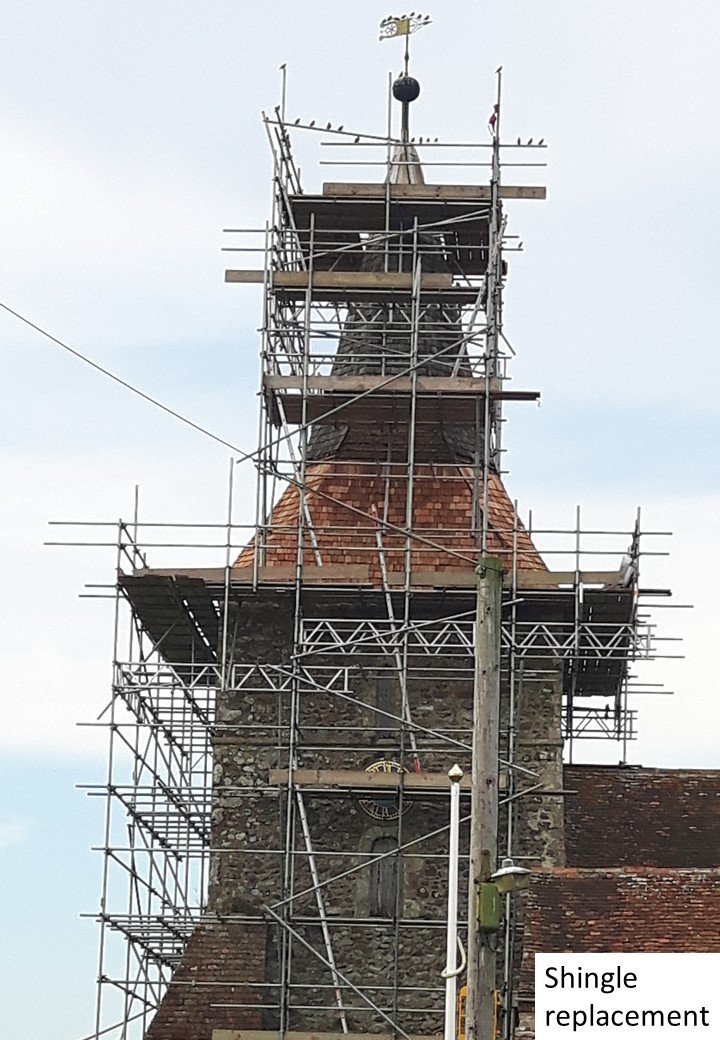
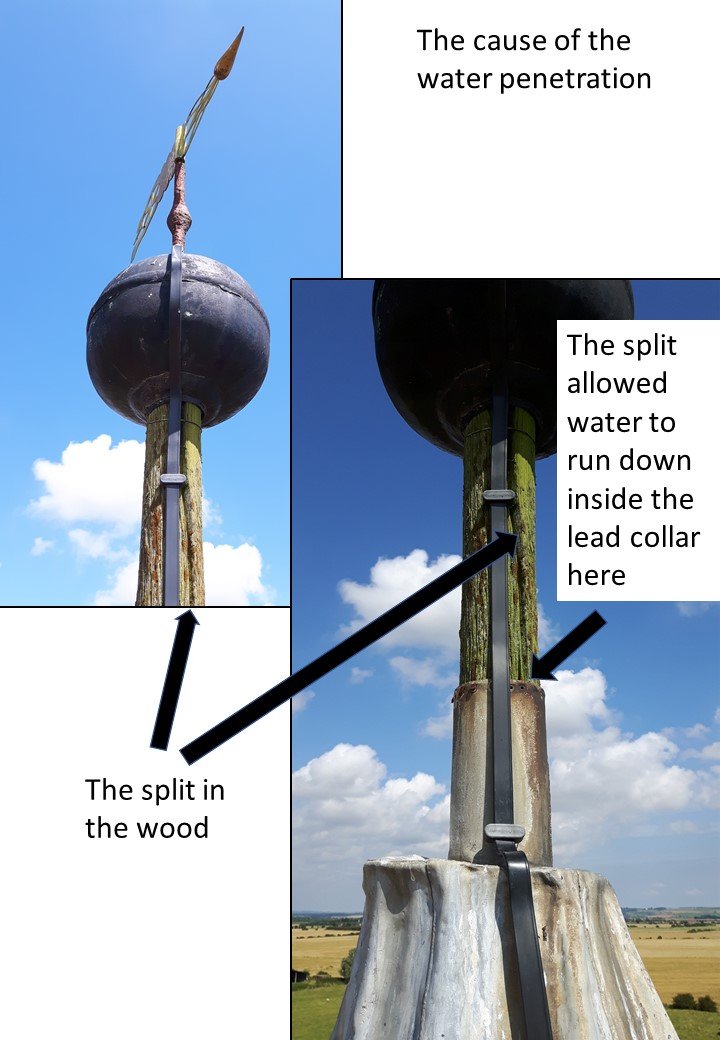

At the same time, the copper sphere which sits below the weather vane had some mysterious holes repaired, and everything was given a coat of protective paint.
Notice in the photographs below, how weathering changes the appearance of new wood.
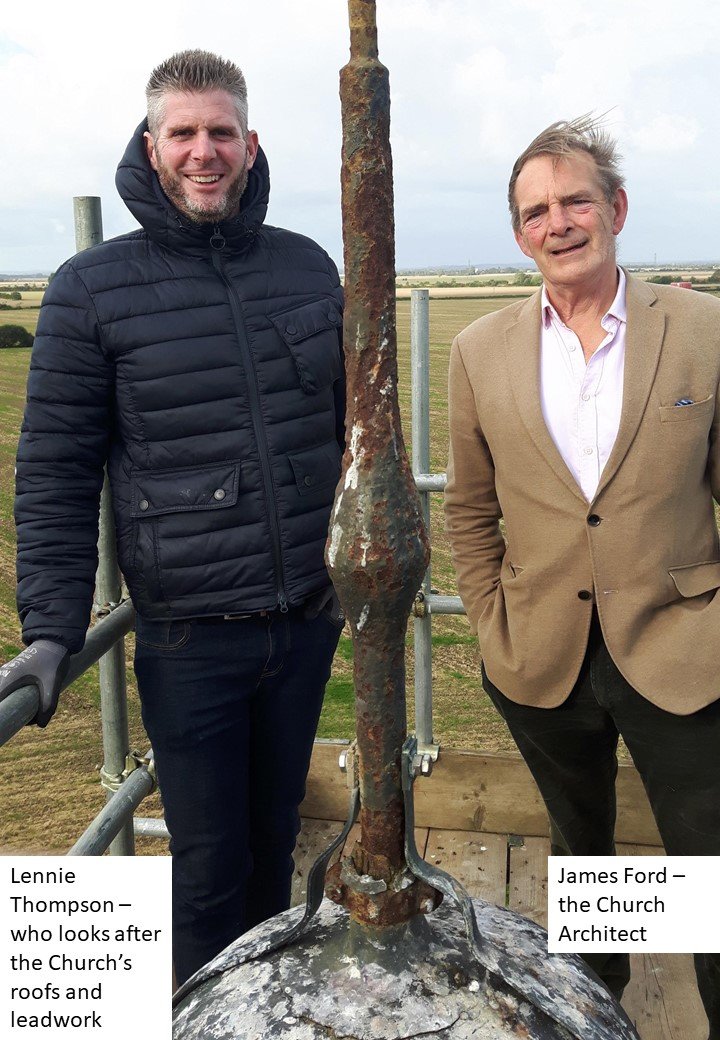
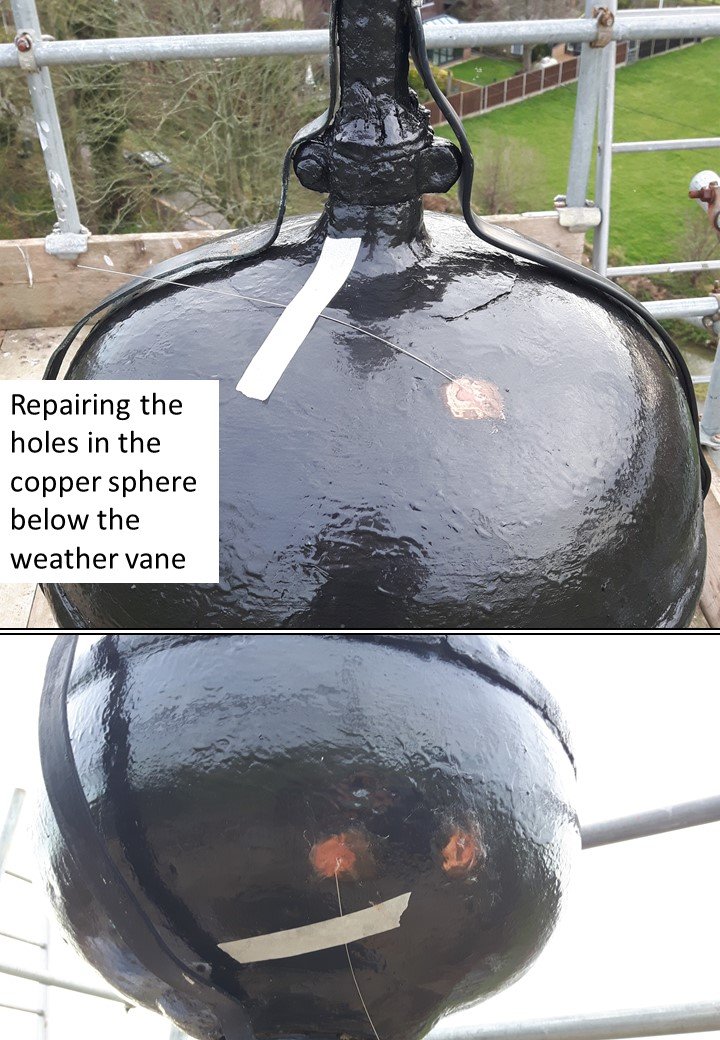


History recorded on the spire
When the scaffolding was in place and the first inspection carried out, an interesting discovery was made.
Initials of the different plumbers who had worked on the spire were found, together with the dates of their work. They had been cut into the lead cap at the top of the spire, and now span four centuries if we include the new collar made by Lennie Thompson (above, left) in December 2021.
More about the church of St Mary The Virgin
Audio tour app
Discover more about St Mary the Virgin’s Church at St Mary in the Marsh with our new self-guided tour. Scan the QR code on your mobile device or click the tour button to view online.
Listen online
An audio-only version of the tour is also available to listen to here.
